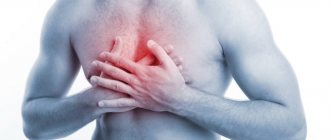Conversion disorder - symptoms
Some of the symptoms of conversion disorder typically include:
- weakness
- paralysis of arms or legs
- loss of balance
- seizures, sometimes with limited consciousness
- episodes of unresponsiveness
- difficulty swallowing
- feeling of a lump in the throat
- shaking and tremor
- difficulty walking
- slurred speech or loss of ability to speak
- difficulty hearing or hearing loss
- double vision, blurred vision, or episodes of blindness
- numbness or loss of touch
Symptoms of conversion disorder vary from person to person and depend on the type of neurological disorder the person has.
Symptoms can be mild or severe, may stop or be continuous, and usually affect the body's ability to function properly.
Classification
Conversion disorder is divided into groups depending on the symptoms that occur, for example:
- Motor problems are disruptions in the functioning of the musculoskeletal system, and some patients experience complete immobility. Coordination and gait disturbances occur, demonstrative seizures and paralysis appear. During an attack, a person may fall to the floor, scream, squirm violently, and take unnatural positions. A seizure can begin completely suddenly and last a couple of minutes or several hours. All this can stop if a stranger appears or the music plays too loudly. In other words, if a stimulus appears.
- Sensitive - sensory perception of the surrounding world is disrupted. The person may not feel pain or heat. If such abilities are not completely lost, then they are still too reduced. The patient may temporarily go blind, deaf, taste and smell will disappear completely or will acquire different duration of perception.
- Autonomic contractions are contractions of smooth muscles in any area of the body. In addition, spasms can also occur in blood vessels, as well as in the heart. Due to the fact that signs can occur in any area and indicate various diseases, diagnosing this pathology is too difficult.
- Mental are hysterical conversion disorders. The patient may become hysterical, fantasize, see hallucinations, and also suffer from imaginary amnesia.
The symptoms may be too severe. There have also been cases when at first the pathologies were periodic, that is, they appeared from time to time, and then became chronic.
If conversion disorder constantly manifests itself with some signs, then such a condition prevents a person from living a normal life. This applies to professional activities and family life.
Diagnostics
A doctor will diagnose conversion disorder using criteria that include:
- loss of movement control or sensory symptoms
- symptoms that occur after a traumatic or stressful event
- symptoms that have no underlying medical or physical cause
- symptoms that interrupt daily activities
Your doctor may suggest additional diagnostic tests to rule out other diseases.
Additional diagnostic methods:
- computed tomography (CT)
- radiography
- electroencephalograms (EEG), which record brain activity and can rule out neurological causes of seizures
- blood pressure measurement and reflex tests
Once diagnosed, there are many treatment options for conversion disorder.
Hysterical neurosis Dissociative (conversion) disorders – according to ICD-10 – F44
Page 1 of 17Next ⇒
The term “hysteria” was used in ancient times, when the cause of hysterical manifestations was associated with sexual dysfunction. This term comes from the Greek word hystera - uterus.
Prevalence. Individual hysterical symptoms are observed in almost 1/3 of the population. Up to 15% of patients with such disorders are admitted to general hospitals. Women get sick 2 times more often than men.
Clinic. The clinic of hysterical neurosis is distinguished by a variety of symptoms - mental, neurological, somatic. Persons with hysterical neurosis are characterized by increased suggestibility, vivid and labile emotions. The peculiarity of hysterical disorders is their demonstrative nature, special variability, suddenness of appearance and disappearance. Symptoms of the disease often take on the nature of manipulating others, and when the traumatic situation is resolved, they weaken or completely disappear. These violations are of a protective nature.
In hysterical neurosis, somatic and neurological symptoms are often closely related to the content of mental trauma. Thus, the fear of contracting some disease can cause “symptoms” of this disease in patients. In this regard, hysteria is called the great imitator, the chameleon.
Hysterical neurosis often develops in individuals of the artistic type with signs of mental infantilism, emotional immaturity, impressionability, and spontaneity. In the clinical picture of hysterical neurosis, the following groups of symptoms are observed: affective, autonomic, motor, sensory.
Affective disorders are manifested by extreme lability of emotions, extreme mood instability, and violent emotional reactions. Patients can sob loudly, giving the impression of inconsolable grief, and after a few minutes laugh cheerfully.
Autonomic disorders manifest themselves in the form of a variety of “somatic” symptoms: pain in the heart, palpitations, fainting, nausea, vomiting, abdominal pain, shortness of breath, “attacks” of suffocation, false pregnancy, etc.
Movement disorders during hysteria can be in the form of hyperkinesis or akinesia. Hyperkinesis has the character of tics, tremors of the head and limbs, blepharospasm, glossolabilic spasm, choreoform movements, and convulsive seizures. A hysterical seizure must be differentiated from an epileptic one.
| Epileptic paroxysms | Hysterical fits |
| Arise without connection with external factors | Occurs in a traumatic situation |
| The duration of the seizure is limited in time | The duration of the seizure depends on the duration of the traumatic situation |
| There is a loss or change in consciousness | Consciousness is clear or affectively narrowed |
| In the postictal period, coma most often occurs, turning into sleep | After a seizure, elements of demonstrativeness and hysterical mutism are noted |
| Increased frequency of paroxysms throughout the course of the disease | The frequency of paroxysms depends on psychotraumatic factors |
| Seizures are common | Seizures are rare |
| Patients develop epileptic personality changes | Patients have personality characteristics of a neurotic type |
| Possible elements of hysteroform manifestations | Hysterical symptoms occupy a leading role in the clinic |
| Characteristic changes on the EEG | EEG within the physiological norm |
| Relief of paroxysmal conditions is achieved with the help of antiepileptic drugs | Relief of paroxysmal conditions is achieved with the help of psychotherapy and tranquilizers |
Hysterical hyperkinesis, unlike organic ones, depends on the emotional state of the patients, is accompanied by unusual postures, vegetative symptoms (lump in the throat), they disappear or weaken after the elimination or deactualization of traumatic influences.
Hysterical akinesias occur as mono-, hemi- and paraplegia. Gait disturbances are characteristic: “astasia-abasia,” when patients cannot stand or walk in the absence of organic disorders. Some patients complain of weakness in the arms and legs, which occurs with excitement, when the legs become “wobbly”, “heavy”, “braided”.
Characteristic of hysterical movement disorders are their inconsistency with the topographical location of the nerve trunks or the localization of the focus in the central nervous system, the absence of pathological reflexes, and changes in tendon reflexes.
Recently, aphonia has become rare; patients often complain of stuttering and difficulty pronouncing certain words.
Sensory disorders are represented by a disorder of sensitivity and pain in various organs and parts of the body. Skin sensitivity disorders have different configurations and locations; most often they are localized in the area of the extremities in the form of gloves, stockings, and socks.
It should be noted that due to the widespread popularization of medical knowledge, a pathomorphosis of hysterical manifestations occurred. So, instead of a complete loss of sensitivity, patients complain of numbness in the limbs, a crawling sensation, and a feeling of heat in the limbs. With hysterical neurosis, patients talk about their experiences with pathos, emphasizing their exceptional nature: the pain is “terrible,” “unbearable,” incomparable. At the same time, they are not burdened by these violations, as if they are indifferent to them.
In foreign literature, some hysterical disorders are called dissociative. Dissociation is a state when, for a time, some mental complexes acquire autonomy and control mental processes in isolation from the integrity of mental life. These are transient disturbances in the integration of mental functions. Hysterical disorders of the dissociative type include amnesia (F44.0), fugue (F44.1), stupor (F44.2), trances and states of obsession (F44.3), hysterical psychoses, a description of which will be given in the chapter “reactive psychoses” .
In the clinical sense, the term “conversion” (Latin conversio - transformation, replacement) means a special pathological mechanism that causes the transformation of psychological conflicts into somatoneurological symptoms. These are motor, sensory and autonomic symptoms of hysterical neurosis.
Course of hysterical disorders Hysterical psychogenic reactions are short-term and disappear without treatment. However, long-term (over several years) fixation of painful symptoms is also possible. In some cases, a wave-like course is observed: after hysterical disorders have subsided, there remains a tendency for them to arise in psychologically unfavorable situations. With a protracted course of hysterical disorders, conversion symptoms become fixed, characterological changes worsen, and persistent asthenia, hypochondriacal and dysthymic disorders develop. Underestimation of the clinical significance of the symptoms of hysteria, interpreted as the result of self-hypnosis or aggravation and simulation, can lead to incorrect diagnosis and the prescription of inadequate therapy.
Unlike conversion hysterical symptoms, during malingering, symptoms imitating a disease are under conscious control and can be interrupted by the malingerer at any time. With hysteria, somato-nerological disorders develop according to their clinical patterns, not in accordance with the wishes of the patient.
Obsessive-compulsive disorder
Obsessive-compulsive neuroses are the general name for neuroses manifested by obsessive fears (phobias), obsessive thoughts (obsessions), obsessive actions, and anxiety.
In ICD-10, various manifestations of obsessive-compulsive neurosis are coded with different signs: phobic and anxiety disorders -F 40; agoraphobia – F 40.0 (without panic disorders – F 40.00; with panic disorders – F 40.01); social phobias – F 40.1; specific (isolated) phobias – F 40.2; other anxiety disorders – F 41; obsessive-compulsive disorder – F 42.
In domestic psychiatry, these conditions are traditionally described as a separate form of neurosis, because they are connected by a common etiological factor (mental trauma), symptoms of the disease occur in people with similar personal characteristics, they rarely occur in isolation and are accompanied by autonomic disorders characteristic of all neuroses. Individual manifestations of this neurosis are often found in patients who are treated by general practitioners. Thus, the prevalence of anxiety-phobic disorders reaches 10-20% in the general medical network; in the population they occur in 5% of cases. Obsessive-compulsive disorders occur in 1.5-2% of cases in the population, and in psychiatrists' practice up to 1% of all patients.
The manifestation of symptoms of obsessive-compulsive neurosis is preceded by mental trauma, which determines the content of the leading disorder. Thus, a patient who found herself in a crowd of people when exiting the subway developed unpleasant sensations in her heart and fear that it might stop, and subsequently developed agorophobia.
In the initial stage of the disease, the most common is panic disorder, which determines the onset of the disease. These are unexpected and rapidly growing vegetative disorders (feelings of suffocation, tightness in the chest, dizziness, palpitations, sweating), accompanied by fear of loss of consciousness, madness, and death. This state can last up to 20-30 minutes. Following panic attacks, obsessive fear develops - phobia, the most common phenomena being agoraphobia, social phobia, and hypochondriacal phobias.
Agoraphobia – fear of open spaces, transport, crowds. The violation is provoked by a trip on the subway, being in a store, a crowd, in an elevator, on an airplane, in a theater, cinema, etc. Fear is accompanied by vegetative symptoms (dry mouth, tachycardia, profuse sweat, tremor), thoraco-abdominal symptoms (shortness of breath, suffocation, chest pain, nausea, discomfort in the gastrointestinal tract), mental symptoms (derealization, depersonalization, fear of losing over control). Patients try to avoid situations where they may be left unaccompanied by a loved one in places where it is difficult for them to leave on their own. Some patients do not leave the house, fearing repetitions of attacks of fear; this disrupts their life pattern and social adaptation; sometimes they refuse any activity outside the home.
Social phobias – fear of being the center of attention, embarrassment and shame in the presence of others. Social phobias usually manifest in adolescence and adolescence and are provoked by special situations at school - this is the answer at the blackboard, an exam; the need to perform on stage, as well as the need to communicate with teachers, educators, and people of the opposite sex. Communication with loved ones does not cause fear. Patients are afraid of situations when they need to perform some action in the presence of strangers; a negative assessment of these actions is assumed. They try not to attend parties, they are afraid to talk, eat, write, or use a public toilet in the presence of strangers. Patients fear that others will notice this fear and mock them. At the same time, the attitude towards fear is always critical, but they cannot get rid of it, which leads to low self-esteem. Social phobias are often accompanied by other mental disorders: anxiety, other phobias, affective pathology, alcoholism, eating disorders.
There are two groups of social phobias: isolated and generalized. Isolated social phobias are the fear of not performing usual actions in public and avoidance of specific situations. There are no communication difficulties outside of these situations. One of the forms of isolated social phobia is the fear of blushing, showing awkwardness, and confusion in communication (ereitophobia). Fearing that others will notice this, patients are shy and often embarrassed in public. With generalized social phobias, along with fear, ideas of low value and relationships appear. These disorders most often occur with scoptophobia syndrome - the fear of appearing funny, of revealing one’s inferiority in public. Patients experience a feeling of shame, which is not due to real facts, but determines their behavior (avoiding contact with people).
Hypochondriacal phobias (nosophobia) are an obsessive fear of a serious illness. Cardio-, cancer-, syphilo-, AIDS-, and stroke phobias are most often observed. These patients often turn to various doctors, demanding examination. The efforts of patients are aimed at eliminating the conditions for fear and panic attacks. They develop a set of protective and adaptive measures: moving to an ecologically clean area, changing jobs. Certain hypochondriacal attitudes are formed: limiting contacts, taking a gentle lifestyle, refusing certain types of activities.
Specific (isolated) phobias - phobias are limited to a strictly defined situation: being near some animal, heights, thunderstorms, nausea, dental procedures. Contact with an object of fear causes anxiety, so these patients are characterized by avoidance of phobic situations or objects.
In addition to obsessive fears, with obsessional neurosis, obsessions (obsessive thoughts) and impulses (obsessive actions) are observed.
Obsessive thoughts arise against the will of the patient, are perceived by him as alien, absurd, and he tries to resist them. Obsessions often take the form of doubts, contrasting obsessions, and obsessive fear of contamination.
With obsessive doubts, patients are haunted by thoughts about the correctness of the decisions and actions taken. Patients constantly try to remember whether they closed the door, turned off the gas or electricity, or turned off the water taps. These doubts haunt the patient while performing his official duties: whether he filled out the papers correctly, followed the orders of his boss, wrote down his phone number, etc. This uncertainty forces you to spend a lot of time on revisions. Obsessive slowness is a serious obstacle to any daily activity, stretching out the simplest actions for hours: dressing, eating, shaving. Obsessive counting, repetition, pedantry, increased thoroughness are often observed, various rituals of counting, “good” and “bad” numbers develop. Contrasting obsessions are extremely unpleasant when patients have an irresistible urge to perform an action or utter a phrase that contradicts their own attitudes and generally accepted morality. For example, uttering obscene words, injuring your loved ones and children. These thoughts cause fear of losing control over oneself and possibly committing actions that are dangerous to others and to oneself. Patients ask loved ones to hide knives, forks, and axes. Obsessive thoughts are accompanied by a feeling of alienation, a strong affective intensity; they are alien to the content of thoughts and are combined with obsessive desires and actions. Often patients have obsessive thoughts and fear of pollution - mysophobia. They are afraid of contamination by dust, urine, soil, sewage, as well as the penetration of toxic substances and microorganisms into the body. To avoid this, patients carefully observe personal hygiene: often wash their hands, change their linen, clean the apartment daily, and carefully handle food products. Patients resort to various methods of protection, some rarely leave their apartment, do not even allow relatives to visit them, for fear of contact with dirt or toxic substances. Obsessive doubts are accompanied by frequent checking of one’s actions.
Obsessive actions almost never occur in isolation. They sometimes occur in the form of isolated, monosymptomatic movement disorders, more often - tics. Patients shake their heads, move their arms, and blink their eyes. Depending on the structural features of the obsessive syndrome, categories are distinguished: F42.0 – obsessive thoughts, mental chewing gum; F42.1 – predominantly compulsive actions, obsessive rituals; F42.1 - mixed obsessive thoughts and actions.
Obsession neurosis is chronic. Recovery is rare. In cases of monomorphic manifestations, there may be long-term stabilization, with a gradual reduction of psychopathological symptoms and social readaptation.
The most resistant to therapy are phobias of infection, pollution, sharp objects, contrasting obsessions, and numerous rituals. These patients have frequent relapses of painful manifestations and are at risk of developing residual disorders.
ICD-10 identifies “other anxiety disorders” F41 as a separate group.
Panic disorder (episodic paroxysmal anxiety) – F41.0 Panic attacks occur in the same way as with agoraphobia. The fear of expecting repeated attacks quickly develops, which patients try to hide. Panic attacks often occur spontaneously without connection with dangerous or life-threatening situations. Anxiety appears suddenly, reaches a maximum within a few minutes, and is accompanied by autonomic disorders. If 4 attacks are observed within a month, then this is moderate panic disorder - F41.00, if up to 4 attacks per week, then this is severe panic disorder - F41.01
Generalized anxiety disorder F41.1 Often combined with other neurotic conditions. It is observed in 2-5% of the population, in women 2 times more often than in men.
Clinically, the disorder is manifested by persistent anxiety, often meaningless, accompanied by a feeling of internal tension and vegetative symptoms, the intensity of which is less than in panic disorder. Patients experience internal trembling, they are fearful, and in all matters they anticipate the worst outcome. Patients are impatient, irritable, and fussy. They usually do not regard painful symptoms as mental, so they rarely turn to a psychiatrist; most of them seek help from internists.
Mixed anxiety and depressive disorder F41.2. Conditions in which the depressive and anxiety components are not sufficiently expressed and none of them dominates the other. These disorders are accompanied by autonomic disorders and occur in psychogenic situations.
Neurotic depression
At the beginning of the 20th century, neurotic depression was first described as an independent nosological form. In ICD-10, these disorders are qualified as a prolonged depressive reaction, manifested by mild neurotic depressive disorders in response to a prolonged stressful situation - F 43.21.
In the domestic psychiatric literature, some authors consider neurotic depression as an independent form of neurosis, others - as disorders that accompany other neuroses.
Neurotic depression develops more often in individuals with rigidity, uncompromisingness, who try not to show their emotions outwardly, but experience troubles “in themselves.” The cause of this neurosis is usually a long-term, unresolved unfavorable situation, such as an incurable illness of a child, separation from loved ones, or the inability to share one’s experiences with someone. Patients try to suppress negative emotions within themselves and do not show them to others.
At the onset of the disease, vegetative-dystonic symptoms appear: sleep disturbances, headache, pain in the heart. Subsequently (after a few weeks) asthenia appears with decreased mood and anxiety. Patients say that they have lost the joy of life and at the same time they do not assess their future as unpromising, they make plans for the future as if not taking into account the unresolved traumatic situation. Patients often try to drown out mental pain by being more active in performing professional and household duties, despite weakness and fatigue. Some patients become tearful for any reason. With a long course of depressive neurosis, a previously unusual volubility appears in patients, when they begin to “pour out their souls” even to unfamiliar people, talk about their experiences and troubles.
One of the features of this neurosis is that traumatic situations usually do not affect the experiences of patients; they, as a rule, do not associate their condition with it. As with other neuroses, the clinical picture of neurotic depression shows a significant severity of somato-vegetative disorders: fluctuations in blood pressure, gastrointestinal dysfunction, sleep disturbances in the form of difficulty falling asleep and waking up in the early morning hours with a feeling of anxiety and palpitations. Patients often turn to therapists for help, who either treat them symptomatically or diagnose some kind of somatic disease. It should be noted that despite the abundance of somatic complaints in patients, there is no hypochondriacal fixation on them. Neurotic depression occurs in waves and is often a stage of neurotic personality development.
Neuroses in children
1Next ⇒
Recommended pages:
Conversion disorder - treatment
If you experience symptoms of conversion disorder, you should seek immediate medical attention as the symptoms may be caused by an underlying medical condition.
The first line of treatment is to determine the underlying cause. Once the patient figures out what the cause is, they can work on solutions to relieve as much stress and emotional trauma as possible. Relieving triggers should in turn reduce physical symptoms.
Suggested treatments for conversion disorder may include:
- treatment of any underlying mental disorders such as depression
- cognitive behavioral therapy (CBT)
- psychotherapy
- relaxation techniques such as meditation or yoga
- physiotherapy
- maintaining a healthy work-life balance
- support from friends and family
Causes of hysterical neurosis
Hysterical neurosis is a typical disorder for people of a certain personality type. Such individuals are distinguished by mental immaturity. Their characteristic features are increased suggestibility, impressionability, and suspiciousness. Women and men of the hysterical type are unable and unwilling to consider another point of view that differs from their own opinion. Hysterics believe that the opinions of other people are not at all worthy of attention. They perceive their views as the only existing position in life.
Hysterical personalities are characterized by high levels of anxiety. They are constantly in psycho-emotional tension. Because of their emotionality and excitability, they often become instigators and participants in conflicts. They often find themselves in high-risk situations.
Children, men and women of the hysterical type are distinguished by demonstrative behavior. The feigned theatricality of their gestures, facial expressions, and judgments creates among others the opinion that their experiences are superficial, artificial, and exaggerated. The core direction of the behavior of such persons is the conscious and purposeful attraction of the attention of others to their own person. Such persons cannot stand an indifferent attitude towards their own personality. They inappropriately emphasize their sexuality and are overly concerned with external attractiveness.
Hysterics are characterized by increased sociability and willingly come into contact with others. Such men and women are constantly looking for circumstances in which acute experiences are present and where they are allowed to be the center of attention. They exaggerate the intensity of their feelings and attach special importance to their own thoughts.
The main goal of hysterics is to manipulate others. They overdramatize their own suffering. Attempts to attract attention are always accompanied by a person’s denial of the existence of such goals. The hysteric is greatly indignant if such an accusation is made against him. If a man or woman fails to become a central figure, he applies specific “countermeasures.” The person becomes enraged and aggressively attacks the opponent. Another “sanction” of hysterics, especially children, is crying attacks. They cry loudly, lament, sob, fall to the floor or start hitting their heads against the wall. Very often, people’s demonstrative behavior pursues a specific goal - to gain some kind of personal gain.
The prerequisites for the formation of a hysterical personality type and the further development of conversion disorder are an unfavorable period of growing up. The germs of hysterical neurosis are laid in childhood. Under unfavorable environmental conditions, when growing up in an asocial environment, the child develops inadequate reactions.
Those children who were deprived of parental love and attention are especially susceptible to hysterical neurosis. Such kids, not aware of maternal care, tried by any means to attract the attention of their parents. Hysterics, running away into illness is a favorite trick of children that has worked at all times. At the same time, having not met an emotional response from the parents, such a child will try hard to get attention from other adults. From early childhood, such a child strives to please and please everyone in order to feel needed. In the future, such children grow up as inferior beings: they lack self-sufficiency and do not have adequate self-esteem.
Another reason for the formation of hysterical neurosis is egocentric parenting of children. This is the model of upbringing when a child is perceived by parents as an extremely valuable being. When he is idealized and made an idol. When the entire lifestyle of the family is subordinated to the satisfaction of the baby. Such children are endlessly adored, they are allowed everything, they indulge their every whim. Such a child lacks the concept of regime, discipline, responsibilities. They rarely hear a refusal to their requests. Finding himself in the adult world, the grown-up egoist feels bewildered when faced with restrictions and prohibitions. However, such people need the attention of others like a drug. Therefore, they try in every way to attract the attention of those around them.
The immediate causes that give rise to the symptoms of hysterical neurosis are chronic stressful situations, sudden extreme circumstances, severe interpersonal conflicts - any problems that the subject considers important and which he is unable to cope with on his own.










